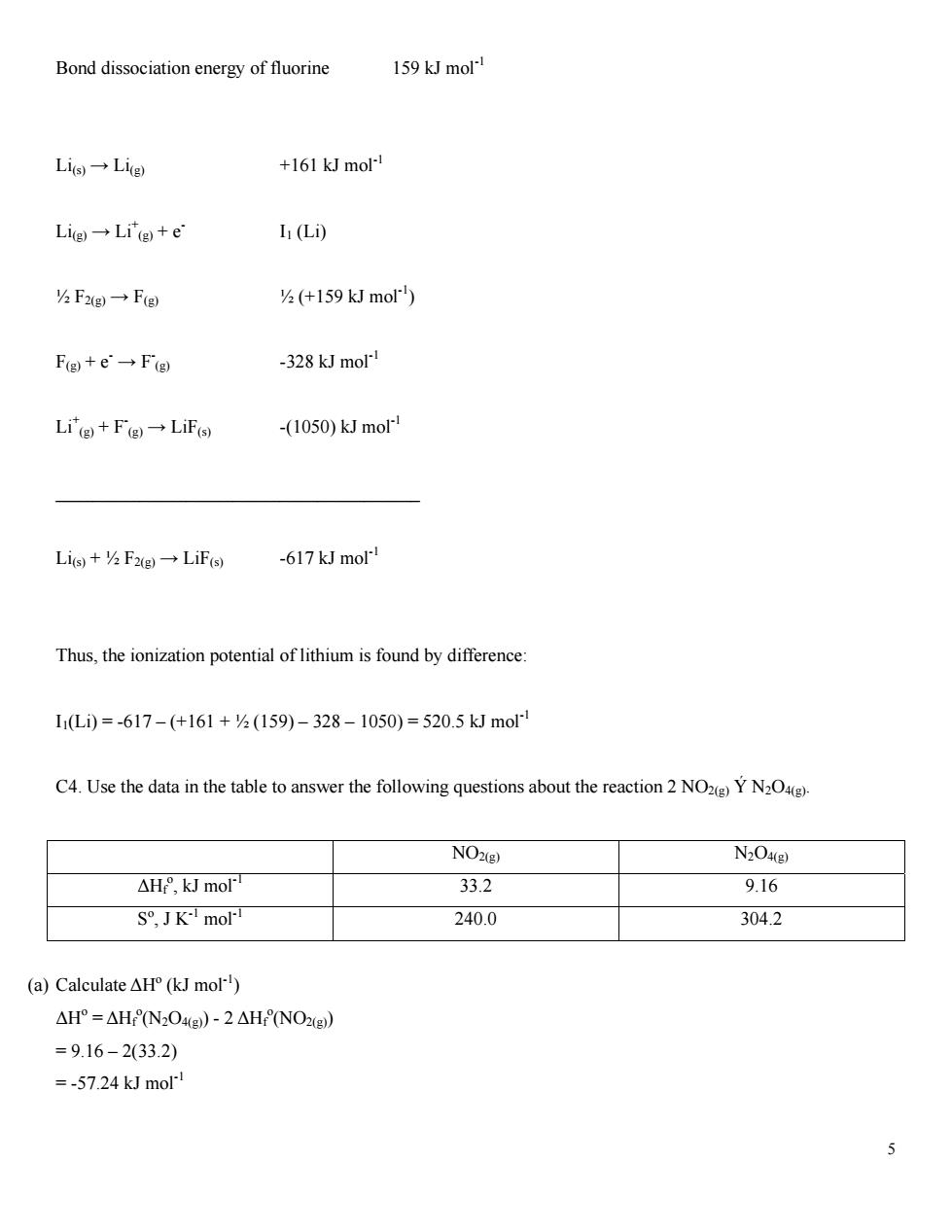正在加载图片...

Bond dissociation energy of fluorine 159 kJ mol! Lig→Lie +161 kJ mol Lig→Litg+e I (Li) hFg→Fg 2(+159kmol) Fg+e→Fg -328 kJ mor Li计g+Fg)一LiFo -(1050)kJ mol Li6+⅓F2g→Lifo -617 kJ mol Thus,the ionization potential of lithium is found by difference: 11(Li)=-617-(+161+⅓(159)-328-1050)=520.5 kJ mol C4.Use the data in the table to answer the following questions about the reaction 2) NO2(g) N204g △H,kJ molT 33.2 9.16 S°,JK-mo 240.0 304.2 (a)Calculate AH(kJ mol) △Hr°=△HN204He)-2AHNO2e) =9.16-233.2) =-57.24 kJ mol5 Bond dissociation energy of fluorine 159 kJ mol-1 Li(s) → Li(g) +161 kJ mol-1 Li(g) → Li+ (g) + e- I1 (Li) ½ F2(g) → F(g) ½ (+159 kJ mol-1) F(g) + e- → F- (g) -328 kJ mol-1 Li+ (g) + F- (g) → LiF(s) -(1050) kJ mol-1 _______________________________________ Li(s) + ½ F2(g) → LiF(s) -617 kJ mol-1 Thus, the ionization potential of lithium is found by difference: I1(Li) = -617 – (+161 + ½ (159) – 328 – 1050) = 520.5 kJ mol-1 C4. Use the data in the table to answer the following questions about the reaction 2 NO2(g) Ý N2O4(g). NO2(g) N2O4(g) ΔHf o , kJ mol-1 33.2 9.16 So , J K-1 mol-1 240.0 304.2 (a) Calculate ΔHo (kJ mol-1) ΔHo = ΔHf o (N2O4(g)) - 2 ΔHf o (NO2(g)) = 9.16 – 2(33.2) = -57.24 kJ mol-1